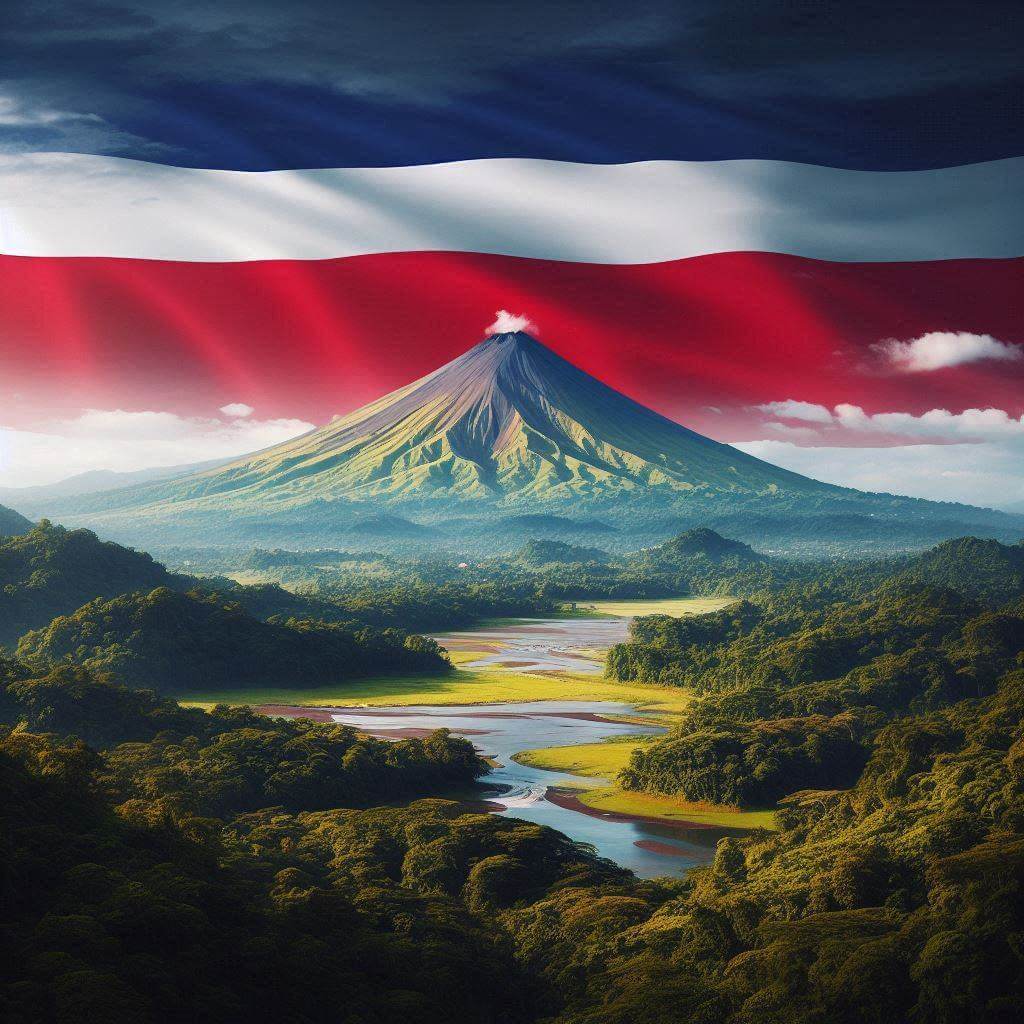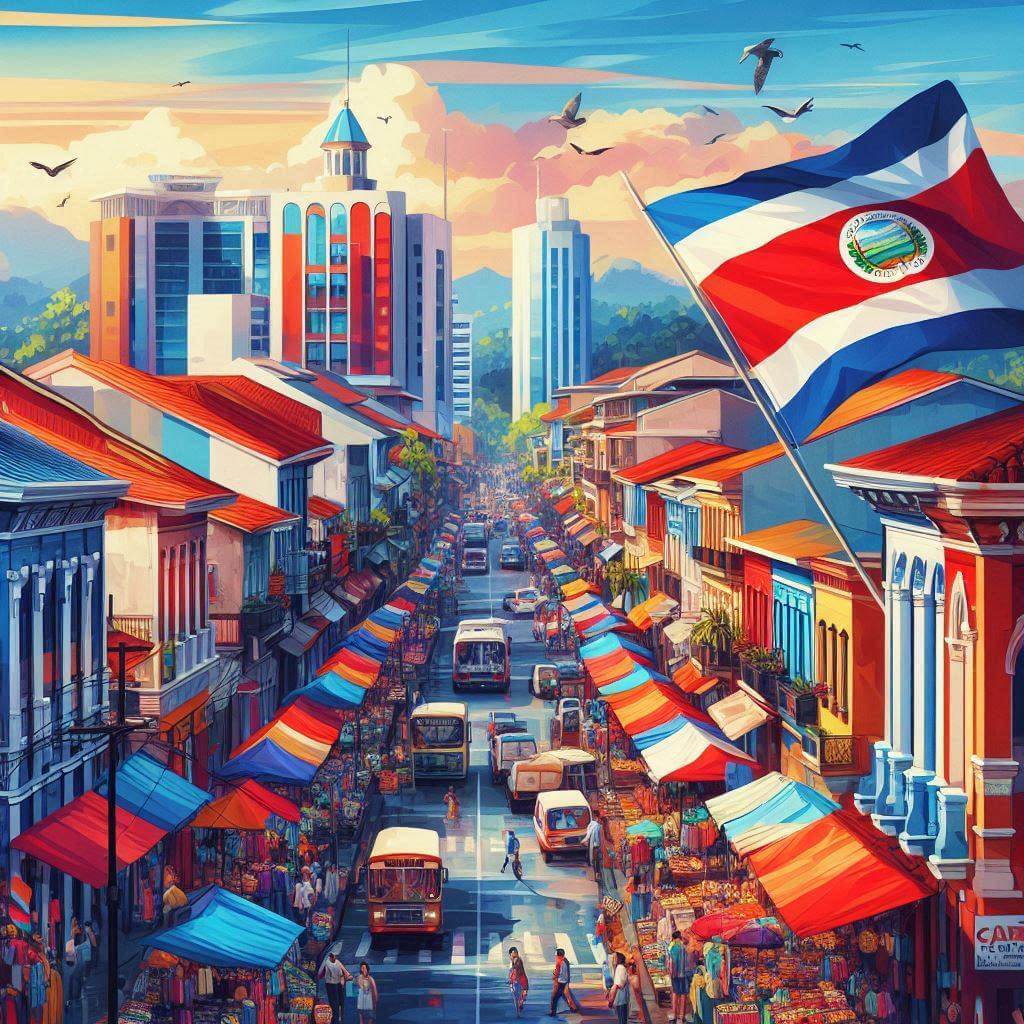The flag of Costa Rica consists of five horizontal bands of blue, white, red, white, and blue, with the national coat of arms in a white elliptical disk on the red band. This unique design incorporates elements of both national pride and international influence, making it a fascinating subject of vexillology.
Costa Rica information
| National Flag Day | — |
| Sovereign state | Yes |
| Official name | Republic of Costa Rica |
| Capital | San José |
| Population | 5,109,429 |
| Area | 51,100 km² |
| Currency | Costa Rican colón (CRC) |
| Language | Spanish |
| Continent | North America |
| Region | Central America |
| Subregion | — |
| Borders | Nicaragua, Panama |
| Timezone | Central Standard Time (CST) UTC-6 |
| Calling code | +506 |
| Top-level domain | .cr |
History of the Costa Rican Flag
 The current flag of Costa Rica was officially adopted on November 27, 1906, though its origins can be traced back to 1848. The design was created by Pacífica Fernández Oreamuno, the wife of then-president José María Castro Madriz. It was inspired by the French Tricolore, reflecting Costa Rica's admiration for the ideals of the French Revolution: liberty, equality, and fraternity.
The current flag of Costa Rica was officially adopted on November 27, 1906, though its origins can be traced back to 1848. The design was created by Pacífica Fernández Oreamuno, the wife of then-president José María Castro Madriz. It was inspired by the French Tricolore, reflecting Costa Rica's admiration for the ideals of the French Revolution: liberty, equality, and fraternity.
Symbolism and Design of the Costa Rican Flag
The flag's design is rich in symbolism, with each color and element carrying significant meaning:
- Blue represents the sky, idealism, and opportunities available to all Costa Ricans.
- White symbolizes peace, wisdom, and happiness, reflecting the nation's commitment to democratic values.
- Red stands for the warmth of Costa Rican people, their love of life, and the blood shed for freedom.
- The coat of arms, added in 1848 and modified in 1906, depicts Costa Rica's landscape, including volcanoes, valleys, and both the Pacific Ocean and the Caribbean Sea.
Evolution of the Costa Rican Flag
The flag has undergone several changes since Costa Rica gained independence in 1821:
- 1821-1823: Costa Rica used the flag of the Federal Republic of Central America.
- 1823-1824: A white flag with a red star in the center was used.
- 1824-1848: Various designs were used, including a blue and white horizontally striped flag.
- 1848-1906: The current design was introduced, but with a different coat of arms.
- 1906-present: The current design with the modern coat of arms was officially adopted.
Usage and Significance of the Costa Rican Flag
 The flag is a source of national pride and is prominently displayed during patriotic celebrations, such as Independence Day on September 15th. It flies on government buildings, schools, and public spaces. Costa Ricans often use the flag's colors in clothing and decorations during national holidays, showcasing their patriotism and unity.
The flag is a source of national pride and is prominently displayed during patriotic celebrations, such as Independence Day on September 15th. It flies on government buildings, schools, and public spaces. Costa Ricans often use the flag's colors in clothing and decorations during national holidays, showcasing their patriotism and unity.
Interesting Facts About the Costa Rican Flag
- Costa Rica's flag is often confused with Thailand's flag, which has the same colors but in a different arrangement.
- The flag's design reflects Costa Rica's nickname, "Switzerland of Central America," due to its neutrality and peaceful nature.
- The coat of arms on the flag features seven stars, representing the seven provinces of Costa Rica.
- Costa Rica is one of the few countries in the world to have demilitarized, which is reflected in the flag's emphasis on peace and democracy.